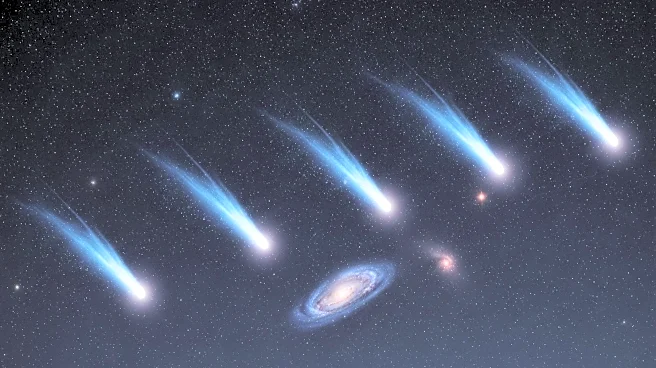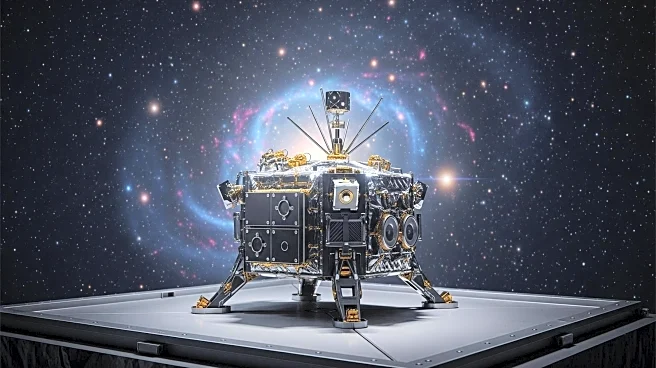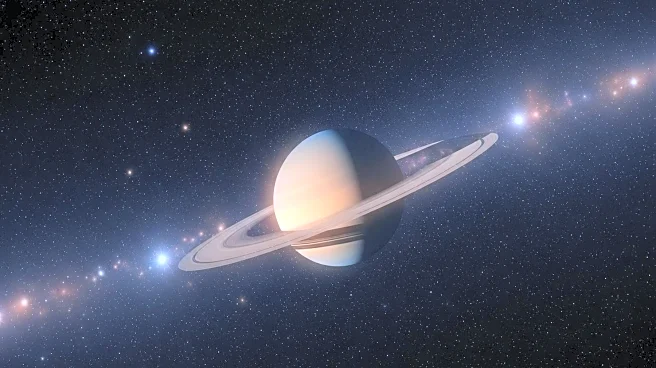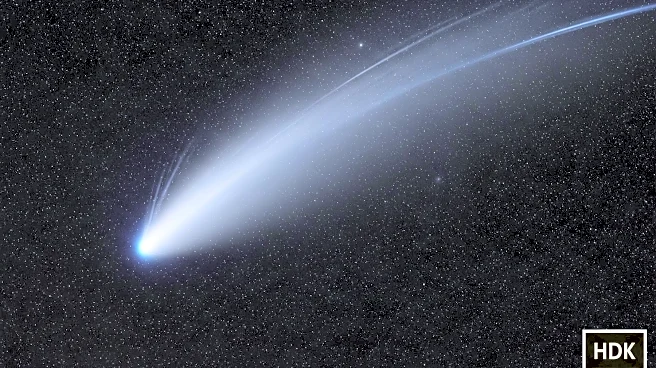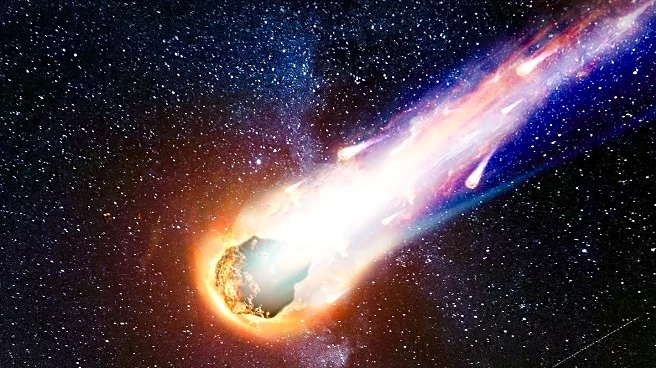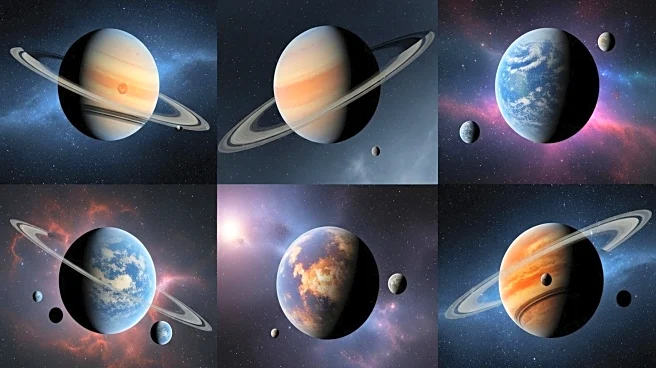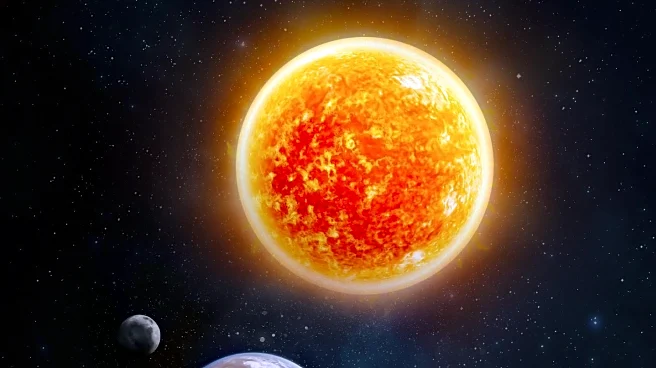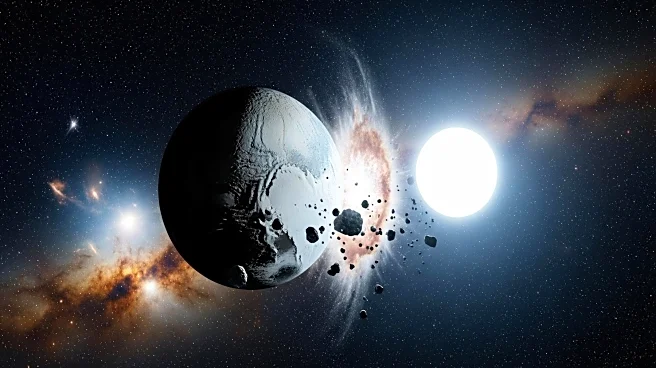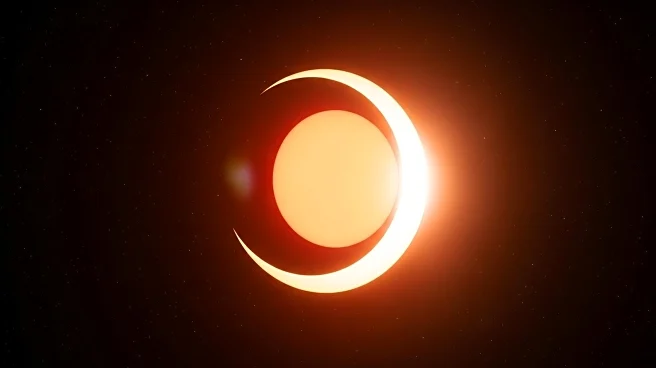What is the story about?
What's Happening?
The astronomical community is currently observing a rare celestial event involving four comets visible in the night sky. Among these, Comet C/2025 R1 (SWAN) is particularly notable for its visibility, while Comet C/2025 A6 (Lemmon) is expected to brighten significantly after its perihelion. Interstellar comet 3I/ATLAS, although part of this group, remains too faint to be seen with the naked eye. The comets are visible under dark and clear skies, with some requiring binoculars for better observation. A notable feature of Comet C/2025 R2 (SWAN) is its blue/green glow, which has been captured in images by Team Ciel Austral and featured on NASA's Astronomy Picture of the Day (APOD). This celestial event is expected to coincide with meteor showers around October 5, as Earth passes through the plane of one of the comet's orbits.
Why It's Important?
This event is significant for both amateur and professional astronomers, offering a unique opportunity to observe multiple comets simultaneously. The visibility of these comets, especially Comet C/2025 R1 (SWAN), provides a chance for educational outreach and public engagement in astronomy. The potential meteor showers could also attract interest from the general public, enhancing awareness and appreciation of astronomical phenomena. For scientists, these observations can contribute to the understanding of cometary behavior and composition, as well as the dynamics of interstellar objects like 3I/ATLAS. The event underscores the importance of continued investment in astronomical research and public science education.
What's Next?
As the comets continue their journey, astronomers will monitor their brightness and trajectory, particularly Comet C/2025 A6 (Lemmon) as it approaches perihelion. The anticipated meteor showers in early October will be a focal point for observation, potentially providing data on the interaction between cometary debris and Earth's atmosphere. Public and educational institutions may organize viewing events to capitalize on the public interest generated by this celestial event. Additionally, the scientific community will likely publish findings from these observations, contributing to the broader understanding of cometary science.
AI Generated Content
Do you find this article useful?
